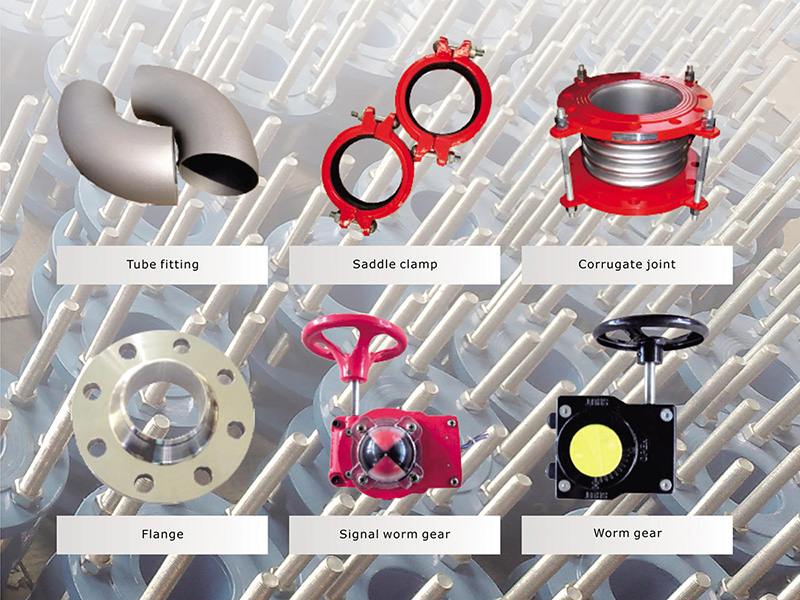Nov . 11, 2024 14:56 Back to list
low pressure check valve
Understanding Low Pressure Check Valves Applications and Benefits
Low pressure check valves play a crucial role in various fluid control systems, ensuring the unidirectional flow of liquids and gases while preventing backflow. These valves are engineered to operate under specific low pressure conditions, making them essential components in many industrial and commercial applications. This article will explore the functions, types, applications, and benefits of low pressure check valves, providing a comprehensive overview of their significance in fluid systems.
What is a Low Pressure Check Valve?
A check valve, also known as a non-return valve, is a device that permits the flow of fluid in one direction while preventing it from flowing in the opposite direction. Low pressure check valves are specifically designed to operate effectively at lower pressure levels, typically below 10 psi, making them ideal for applications where high pressure is not a factor. These valves are vital in maintaining the integrity of fluid systems by ensuring that the fluid flows only in the intended direction, thus preventing potential damage caused by backflow.
Types of Low Pressure Check Valves
There are several types of low pressure check valves, each suited for specific applications and operational requirements. The most common types include
1. Swing Check Valves These valves feature a swinging disc that opens with forward flow and closes against backflow. They are ideal for applications with low pressure and are commonly used in water systems.
2. Lift Check Valves Equipped with a movable disk that lifts off its seat when forward flow occurs, these valves provide tight sealing and are suitable for applications where back pressure is present.
3. Ball Check Valves Incorporating a ball that seals the flow when backflow occurs, ball check valves are versatile and can handle various fluids and pressures, particularly in low-pressure applications.
4. Spring-Loaded Check Valves These valves utilize a spring mechanism to maintain the valve's closure until positive pressure is applied. They are reliable in low pressure situations and ensure quick response to changes in flow direction.
Applications of Low Pressure Check Valves
Low pressure check valves find applications in a wide range of industries where fluid control is critical. Some common applications include
low pressure check valve

- Water Supply Systems Ensuring proper flow in irrigation and municipal water distribution systems, low pressure check valves prevent reverse flow that could contaminate clean water sources
.- HVAC Systems In heating, ventilation, and air conditioning systems, these valves maintain airflow direction, preventing backflow that can lead to system inefficiencies and increased energy consumption.
- Pneumatic Systems Low pressure check valves are essential in pneumatic applications to maintain air flow and pressure levels, ensuring optimal performance and preventing leaks.
- Chemical Processing In chemical industries, where substances may be corrosive or hazardous, these valves ensure safe transfer of liquids while minimizing contamination risks.
Benefits of Low Pressure Check Valves
The benefits of using low pressure check valves in fluid systems are numerous
- Prevention of Backflow By allowing fluid to flow in one direction only, these valves protect systems from potential damage and contamination stemming from reverse flow.
- Operational Efficiency Low pressure check valves enhance the efficiency of fluid systems by ensuring proper flow direction, reducing the risk of operational disruptions and system failures.
- Safety Improvement In applications involving hazardous or toxic fluids, these valves help prevent leaks or spills, contributing to a safer working environment.
- Versatility With various designs available, low pressure check valves can be tailored to meet the specific needs of different applications, making them a versatile choice for engineers and system designers.
Conclusion
In summary, low pressure check valves are essential components in modern fluid control systems. Their ability to prevent backflow while ensuring efficient and safe fluid movement makes them indispensable in a variety of applications. Whether in water supply systems, HVAC applications, or chemical processing, these valves play a vital role in maintaining the integrity and efficiency of fluid systems. Understanding their types, applications, and benefits is crucial for anyone involved in the design, installation, or maintenance of fluid management systems.
Share
-
Reliable Wafer Type Butterfly Valves for Every IndustryNewsJul.25,2025
-
Reliable Flow Control Begins with the Right Ball Check ValveNewsJul.25,2025
-
Precision Flow Control Starts with Quality ValvesNewsJul.25,2025
-
Industrial Flow Control ReliabilityNewsJul.25,2025
-
Engineered for Efficiency Gate Valves That Power Industrial PerformanceNewsJul.25,2025
-
Empowering Infrastructure Through Quality ManufacturingNewsJul.25,2025